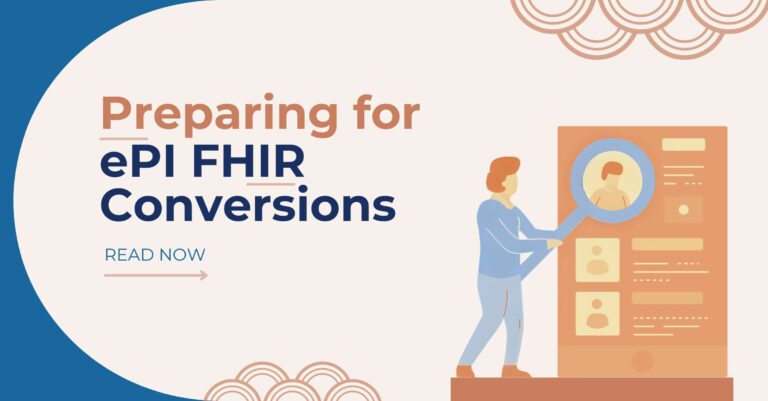
HL7[1] accelerator Vulcan[2] recently published an implementation guide for FHIR, an interoperability standard intended to facilitate the exchange of healthcare information across the ecosystem. Shortly after, the European Medicines Agency (EMA) announced that it would begin accepting FHIR outputs on a trial basis; other health authorities, including the FDA, are likely to follow suit.[3]
The inevitable adoption of the FHIR standard will require pharmaceutical companies to convert their global labels from current health authority-approved formats into the FHIR format. As the standard is adopted over the next few years, there will be significant change to navigate, and scaling to meet the requirements will be cumbersome, expensive, and time-consuming. Partnering with a vendor who can leverage automation to convert their existing labels quickly and easily into the FHIR format can alleviate these stressors.
This blog offers an in-depth exploration of these challenges, focusing on the pivotal role of automation in simplifying the conversion process.
What is HL7 FHIR?
One of the central challenges in healthcare has been making health records available, discoverable, and understandable as patients move around the healthcare ecosystem.
Introduction to FHIR: Fast Healthcare Interoperability Resource
The wide variability in processes and documentation across the ecosystem has made information sharing and clinical decision support challenging. HL7 and its members strive to provide a framework for the exchange, integration, sharing, and retrieval of electronic health information through developing standards such as FHIR (Fast Healthcare Interoperability Resource). These standards define how information is packaged and communicated from one party to another, and set the language, structure, and data types required for seamless integration between systems.
Why are Regulators Implementing FHIR?
HL7 FHIR is an interoperability standard that aims to simplify implementation without sacrificing information integrity. It leverages existing logical and theoretical models to provide a consistent, easy-to-implement, and rigorous mechanism for exchanging data between healthcare applications. For example, FHIR has built-in mechanisms for traceability to the HL7 RIM and other important content models.
Specifically, FHIR solves the challenge of variability caused by diverse processes by defining a simple framework for extending existing exchange data (or “resources”) and describing their use with profiles, rather than by simply adding fields/optionality or custom extensions (both of which are costly and difficult to implement).
With FHIR, all systems can read all data, and applications can add more control and meaning using profiles. Further, to support automated clinical decision support and other machine-based processing, FHIR calls for data to be both structured and standardized; each data set carries a human-readable text representation using HTML as a fallback display option for clinical safety. This is particularly important for complex clinical information where many systems take a simple textual/document-based approach.
The Growing Adoption of FHIR in Healthcare
Given that HL7 standards are recognized as the most used in the world and that health authorities are already employing ePI FHIR on a trial basis, it is only a matter of time before FHIR becomes the interoperability paradigm across the life sciences industry.
The inevitable adoption of the FHIR standard will require pharmaceutical companies to convert their global labels from current health authority-approved formats into the FHIR format. As the standard takes effect in the coming years, organizations will face substantial changes, and the task of adapting to meet the requirements using current resources will be challenging, costly, and time-intensive.
The Key to FHIR Conversions: Automation
Challenges of Manual Conversion
Manually converting existing global labels to the FHIR standard format will not only put a significant strain on existing content authoring resources but can also result in low-quality health authority submissions and costly transcription errors.
Exploring Automation Partnerships
To increase quality, save time, and reduce reliance on manual copy and pasting of data, life sciences companies should consider leveraging automation tools for their FHIR conversions. Not only can automation tools reduce the volume of manual conversion efforts and time required for conversion, but they can also maintain the integrity of any foreign-language translations.
However, most life sciences organizations do not have an in-house tool that contains the automation capabilities required to read, understand, and convert existing global labels into an XML format with the appropriate FHIR tags quickly and easily. Consequently, life sciences companies must begin exploring partnerships with vendors who can either perform conversion services (outsourced model) and/or implement software that can facilitate company and operated automated conversions (insourced model).
KEY TAKEAWAYS: THE BENEFITS OF HL7 FHIR
- Creates a common specification by which healthcare participants can share information
- Enables development of patient- and provider-facing applications that benefit from access to high-quality information
- Supports improvements in the delivery of healthcare including new initiatives, such as Value Based care
- Strong foundation in Web standards: XML, JSON, HTTP, OAuth
- Support for RESTful architectures, seamless exchange of information using messages or documents, and service-based architectures
- A human-readable serialization format for ease of use by developers
- Concise and easily understood specifications; specification is free for use with no restrictions
Choosing Between Insourcing and Outsourcing
There are pros and cons for both insourced and outsourced conversion models. Insourcing, for example, can allow life sciences companies to optimize end-to-end labeling while gaining the ability to generate ePI FHIR, as well as scale to other use cases like CMC and clinical labeling. However, generating complex FHIR outputs requires diligent quality checks and a “human in the loop” review.
Insourcing Challenges and Considerations
At ~10 hours per conversion review, high volumes of staff will be needed to meet FHIR conversion demands. Further, because the FHIR format is new and likely to have rapidly changing output requirements, FTEs would need to be scaled up and down to meet changing conversion demands over time.
Outsourcing Benefits and Efficiency
Outsourcing conversions can alleviate staffing challenges, including hiring and training headcount, as it minimizes the number of ePI FHIR specialists required in-house. Additionally, outsourcing can reduce the timeline to generate FHIR outputs, allowing pharmaceutical companies to capitalize on industry-driven improvements and best practices more efficiently. While both conversion models can better position companies for the inevitable shift to FHIR, the outsourced model is more robust as vendors can typically scale and take in changes more quickly, leading to increased quality, saved time, and sustained compliance with industry standards.
Our Approach to Outsourcing Conversions
The general process for converting existing global labels to the ePI FHIR format is as follows: 1) ingest the existing documents/data; 2) transform the data into a health authority agnostic XML file; 3) generate an FHIR output; 4) perform quality checks and updates; and 5) generate the final ePI output.
Utilizing NLP & Generative AI for FHIR
At Glemser, we follow the general conversion process laid out above, but we leverage our deep industry knowledge and proprietary ComplianceAuthor AI ecosystem to ensure output quality and compliance. For example, Glemser employs ComplianceAuthor AI’s natural language processing (NLP) and Generative AI capabilities to ingest existing labels, instantaneously convert any unstructured data to indexed structured data from source repositories, and append FHIR tags and additional metadata.
Using NLP and Generative AI not only speeds up the document ingestion and formatting processes but also ensures that all data (i.e., charts and graphs) and translations are correctly transformed into the FHIR format from the get-go.
To validate the transformation, Glemser also executes detailed quality checks on behalf of our partners. We keep a human in the loop to perform quality checks, resolve deviations as required, re-perform quality checks, and confirm the compliant output before sending it to our partners. Finally, we store all confirmed ePI FHIR outputs on a controlled system to facilitate easier and faster updates as the need arises.
Conclusion
Embracing the inevitable shift to FHIR standards presents pharmaceutical companies with both a significant challenge and an array of immeasurable benefits. As the industry moves towards adopting the HL7 FHIR standard for exchanging healthcare information, companies must prepare to convert their global labels into the FHIR format, but they don’t have to do it alone.
Ready to start preparing for ePI FHIR? Contact Glemser today to get started.
[1] Health Level Seven International (HL7) is a not-for-profit, ANSI-accredited standards developing organization dedicated to providing a comprehensive framework and related standards for the exchange, integration, sharing and retrieval of electronic health information that supports clinical practice and the management, delivery and evaluation of health services. HL7 standards are recognized as the most commonly used in the world.
[2] The HL7 accelerator tasked with accelerating health data interoperability. The accelerator is made up of representatives from government agencies, academia, technology companies, standards development organizations, patients, and industry consortiums.


